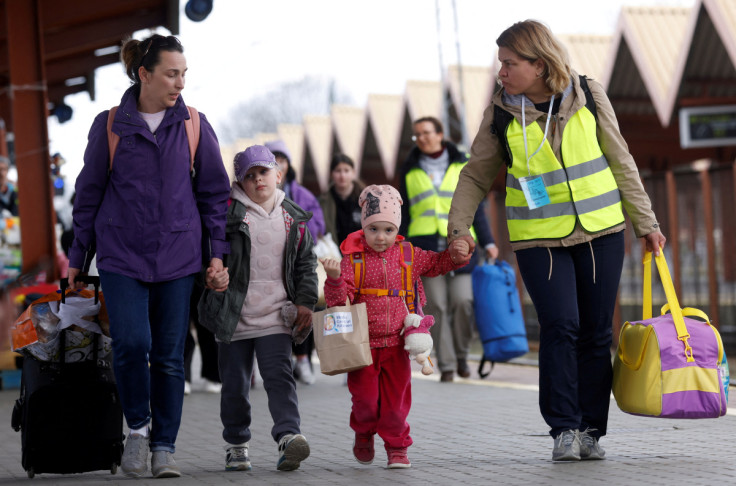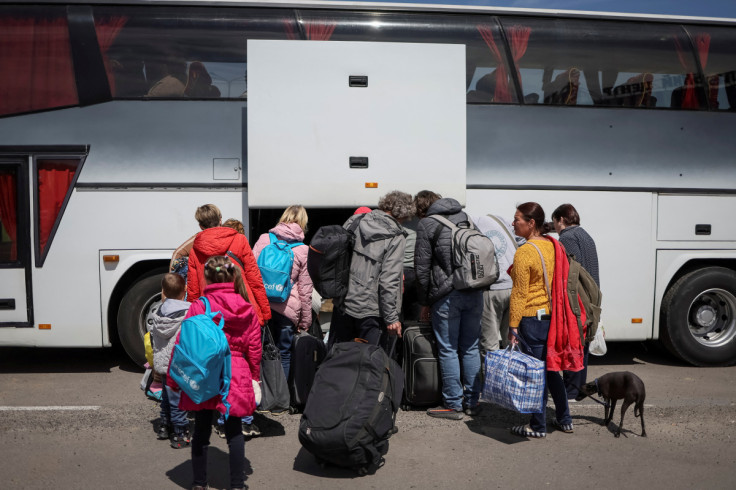East Europeans prepare for possible new Ukrainian refugee wave as winter nears

Eastern European countries are preparing to reopen reception centres and are restocking food supplies in anticipation of a possible fresh surge in Ukrainian refugees as winter looms and Russia targets Ukraine's power grid and heating plants.
Some 6.9 million people are believed displaced internally within Ukraine, often living in very tough conditions, and the Slovak government's contingency plan envisages the possible inflow of hundreds of thousands of them in coming months.
Data from the U.N. refugee agency UNHCR shows some 4.5 million Ukrainian refugees currently registered under various protection schemes across Europe, many of them in the EU states bordering Ukraine - Slovakia, Poland, Hungary and Romania.
After an initial surge following Russia's invasion on Feb. 24, the number of refugees heading west out of Ukraine dropped in late spring. There has been no big uptick in numbers so far this autumn but charities say there are now signs of increased movement across the borders and are stepping up preparations.
"An increase in numbers is being felt, and is expected. It is currently up 15%," said Roman Dohovic, an aid coordinator for the eastern Slovak city of Kosice.
"We are being called by people who are already staying in Kosice and looking for accommodation for family members and acquaintances who are still in Ukraine."
Kosice has provided accommodation for about 60 people daily in recent weeks but is preparing to raise that to 1,000 within 48 hours if needed.
In Hungary, Zsofia Dobis-Lucski, spokesperson for the Hungarian Reformed Church Aid, an NGO working at the border, said the number of daily arrivals at the Zahony train station close to the border, had jumped tenfold to around 300-500 since Russia's bombardment of Ukrainian cities intensified.
That is still below the 1,000 per day seen in the spring but power shortages in Ukraine are expected to boost arrivals in coming weeks.
WINTER IS COMING
Slovakia's contingency plan reckons as many as 700,000 people could cross onto its territory over three months due to tumbling temperatures and continued heavy fighting in parts of eastern and southern Ukraine.
"A large number of (Ukraine's) internally displaced people are currently temporarily housed in conditions that are not suitable for the winter. Further escalation of the conflict is also a risk," the plan said.
The eastern Polish town of Przemysl, the busiest gateway for refugees since the Russian invasion, has been largely quiet, with just a few dozen people currently staying at the local reception centre, a fraction of the 4,000 seen in the spring.
"We have to prepare for winter, we have long anticipated that it may be difficult and we must be ready for some new wave of refugees," said Witold Wolczyk from Przemysl city hall.
"We are constantly stocking up on hygiene products and food," he added.
Charity Caritas Slovakia said it had enough tents and sleeping bags from last winter but has observed a drop in public contributions and has insufficient food supplies in stock.
Czech Interior Minister Vit Rakusan said last week after a trip to Kyiv that about a fifth of the refugees who registered to stay in Europe had returned to Ukraine - and some of those may return due to harsh winter conditions.
The Czech Republic does not border Ukraine but has been a popular destination for refugees, giving temporary permission to stay to around 457,000.
"Anything above half a million arrivals will put heavy strain on the healthcare and education systems but especially on capacity to provide decent accommodation," Rakusan said. "It will not be possible to build improvised tents in the winter."

Copyright Thomson Reuters. All rights reserved.






















